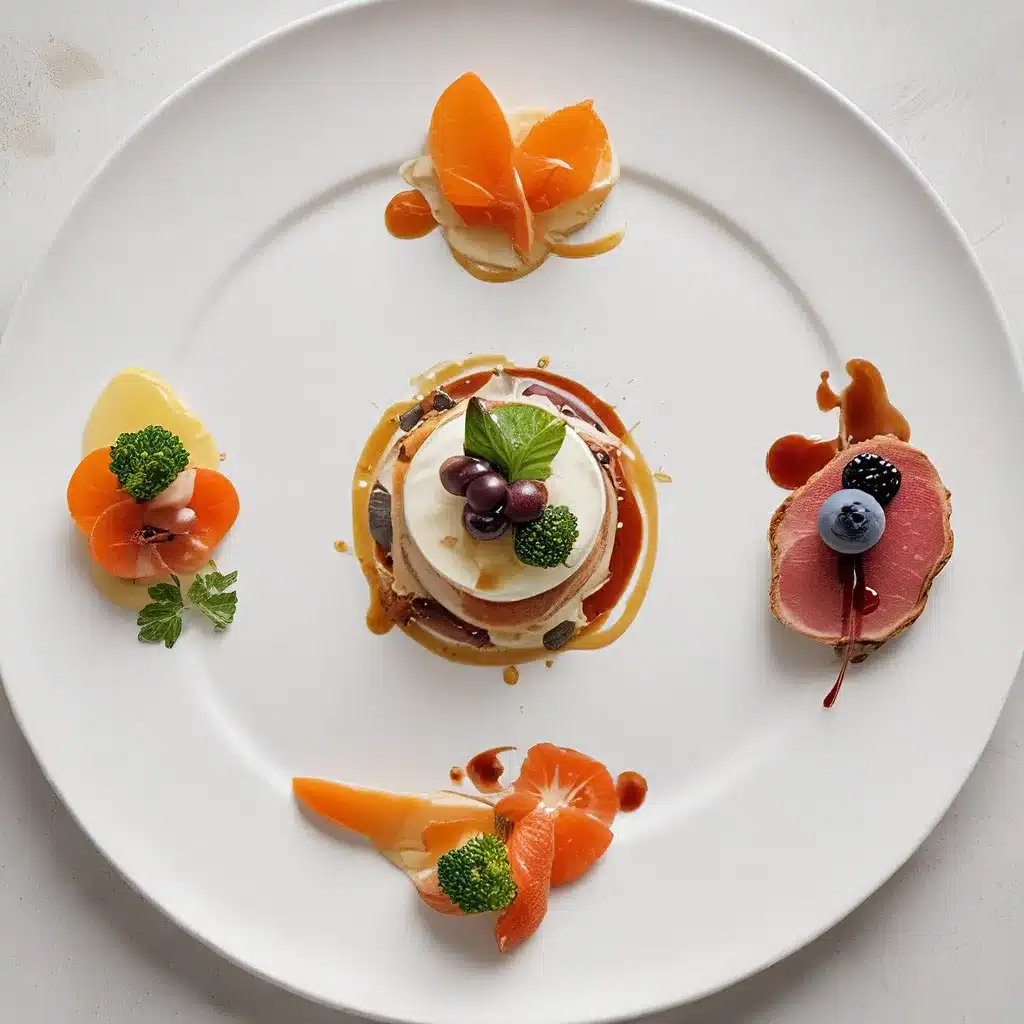
As a self-proclaimed foodie, I’ve always been captivated by the intricate world of culinary plating. The way a dish is presented can make all the difference in elevating a meal from ordinary to extraordinary. That’s why, when I had the chance to visit Saint Marc USA, a renowned restaurant in the heart of the city, I knew I had to dive deep into their plating practices.
The Perfection Paradox: Balancing Flavors and Aesthetics
Walking through the doors of Saint Marc, I was immediately struck by the restaurant’s elegant yet inviting atmosphere. The space was designed with clean lines and a modern sensibility, setting the stage for the culinary masterpieces that were about to unfold.
As I settled into my table, I couldn’t help but notice the meticulous attention to detail in the presentation of each dish that arrived. It was as if the chefs had transformed the plates into veritable works of art, using a palette of vibrant colors, carefully arranged ingredients, and imaginative garnishes.
“Plating is a delicate balance,” explained Chef Emilia, the mastermind behind Saint Marc’s culinary creations. “We don’t just consider the flavors of the dish – we also think about how it will visually captivate our guests. It’s a constant dance between taste and aesthetics.”
The Science of Plating
I learned that the art of plating is rooted in a deep understanding of color theory, texture, and spatial arrangement. The chefs at Saint Marc meticulously plan the placement of each element on the plate, strategically using contrasting hues, complementary flavors, and varied textures to create a harmonious and visually striking presentation.
“It’s not just about making it look pretty,” Chef Emilia emphasized. “Every component on the plate has a purpose – whether it’s to balance the overall flavor profile, add a textural contrast, or simply draw the eye to a particular element.”
For example, in the signature Seared Scallop Tartlet dish, the delicate scallops are nestled atop a buttery pastry crust, surrounded by a vibrant green pea puree and garnished with crisp radish slices and edible microgreens. The combination of colors, shapes, and textures creates a visually captivating and immensely satisfying dining experience.
The Art of Plating: Technique and Creativity
As I observed the chefs in action, I was amazed by the level of precision and artistry they brought to each plate. From the careful placement of each ingredient to the intricate drizzle of sauces and the meticulously arranged garnishes, every step was executed with the utmost care and attention to detail.
“Plating is as much an art form as it is a technical skill,” Chef Emilia explained. “It requires a deep understanding of flavor profiles, a keen eye for aesthetics, and the dexterity to execute each component with finesse.”
The chefs at Saint Marc are constantly experimenting with new techniques and flavor combinations, pushing the boundaries of traditional plating styles. They might use edible flowers to add a touch of whimsy, or incorporate unexpected textures like crunchy tuile or airy meringue to create a sense of surprise and delight.
The Importance of Attention to Detail
During my visit, I witnessed the meticulous attention to detail that went into every plate. From the precise placement of each ingredient to the seamless execution of the final presentation, it was clear that the chefs at Saint Marc were committed to elevating the dining experience through their plating artistry.
“We believe that the way a dish is presented can significantly impact the overall enjoyment and appreciation of the flavors,” Chef Emilia shared. “When a guest sees a beautifully plated dish, it immediately sets the stage for an elevated culinary journey.”
This commitment to excellence was evident in the way the chefs carefully reviewed each plate before it left the kitchen, ensuring that every element was in perfect harmony. They would sometimes make subtle adjustments, adding a final touch of garnish or adjusting the placement of a particular ingredient, all in the name of achieving the perfect presentation.
The Evolving Art of Plating
As I delved deeper into the world of culinary plating, I discovered that it is an ever-evolving art form, constantly being pushed forward by innovative chefs and inspired by the changing tastes and preferences of diners.
“The art of plating is not a static pursuit,” Chef Emilia explained. “It’s a dynamic and ever-changing landscape, where we are constantly exploring new techniques, experimenting with unique ingredients, and challenging the boundaries of traditional presentation styles.”
At Saint Marc, the chefs are not only honing their plating skills but also staying attuned to the latest trends and emerging techniques in the industry. They attend culinary conferences, collaborate with other chefs, and engage in ongoing research to stay at the forefront of the ever-evolving world of plating.
Embracing the Future of Culinary Plating
As I spoke with Chef Emilia, I couldn’t help but wonder about the future of culinary plating. She shared her vision of a world where plating becomes an integral part of the overall dining experience, seamlessly blending with the flavors and textures of the food to create a truly immersive and unforgettable journey for the senses.
“In the years to come, I believe we’ll see even more innovative and boundary-pushing approaches to plating,” Chef Emilia said. “Perhaps we’ll see the incorporation of interactive elements, where the presentation of the dish invites the diner to engage with it in new and exciting ways.”
The possibilities, it seemed, were endless, and I left Saint Marc feeling inspired and eager to see what the future of culinary plating might hold. One thing was certain: the art of plating was not just a means to an end, but a true expression of the chef’s creativity and a reflection of the restaurant’s commitment to delivering an unforgettable dining experience.
Visit Saint Marc USA to witness the art of plating in person and embark on a culinary journey like no other.

